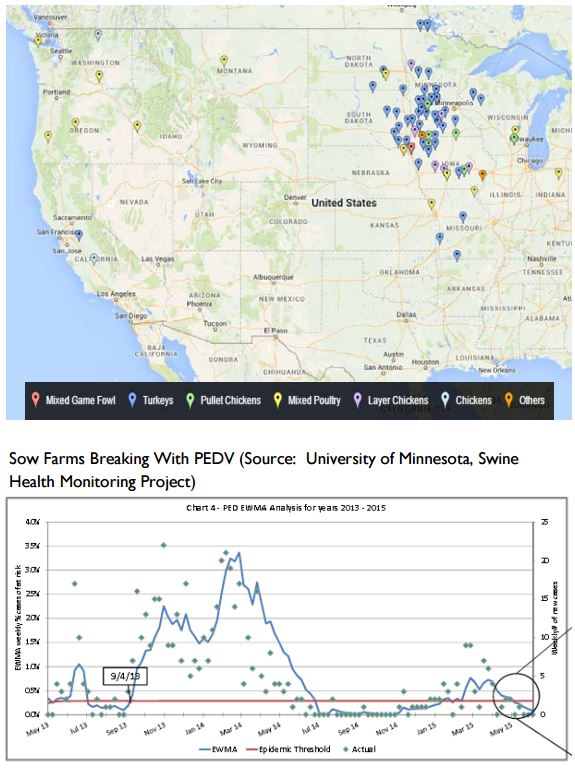



CME: Bird Flu Impact on US Slowing, But Concerns Remain
US - It appears that the incidence and spread of high pathogenic avian influenza (HPAI) is, as expected, slowing as the weather warms up, write Steve Meyer and Len Steiner.Some important developments in the avian influenza situation last week include:
- The week ending June 12 saw only one new case of HPAI and that case was in a small flock of mixed game and fowl. It involved 2500 birds and brings the total infected or destroyed to 47.091 million.
- USDA has now separated “chicken pullets” and “laying chickens” in there HPAI impact numbers. We could find no specific discussion of the change in the USDA materials but presume that this would separate young birds that had yet to begin laying from mature birds that were already in production. USDA says that 31.454 million laying chickens and 5.874 million pullet chickens have been lost as of last week. There were 295.9 million layers in inventory on May 1, 2.7 per cent fewer than one year ago. This total includes some impact of HPAI.
- Turkey losses remain at 7.76 million. That compares to 2014 slaughter of 237 million - or nearly 3.3 per cent of the total. Not all of those birds were “market flocks” as we have heard anecdotal reports of several breeder flocks being impacted. Having a breakdown of turkey losses between market and breeder flocks would be helpful since the market flock losses will impact markets for six months or less but breeder losses may impact markets for a year or more.
- There is still a lot of concern about what HPAI might do this fall. There is some talk that USDA is considering vaccination of broilers should the disease spread to the Southeast. The problem with that is that vaccination results in birds that will test positive for HPAI and the presence of positive birds will likely block exports even if the virus itself is no longer circulating in the population. Logically, the industry is pushing back on vaccination. While culling infected flocks is expensive, a lengthy block of exports from Georgia and Alabama, the number 1 and 2 broiler states, would be devastating to the US broiler sector and a huge drag on competitor species.
Last year’s big disease issue, porcine epidemic diarrhea virus (PEDv), continues to raise concerns about the coming winter as well.
The University of Minnesota’s Swine Health Monitoring Project gets data each week from 19 production systems that have roughly 2.1 million sows. That’s about 40 per cent of the national sow herd so, even though the same is not random, it is certainly large.
It also represents all of the major production areas and thus provides, we think, a good picture of the activity level or PEDv in farrowing units where virtually all of the PEDv death losses occur.
As can be seen, the number of sow farm cases has been at zero for each of the past three weeks and peaked out at only 9 in two weeks back in February.
But what about this coming year? The concern arises from the fact that many of the sows that had immunities from 2013-14 infections will be gone by this fall, leaving many herds susceptible once again to PEDv.
Some confidence comes from the fact that many systems have been exposing incoming gilts (young females) to the virus before adding them to sow herds.
This practice will result in higher immunity levels than would adding PEDv naïve gilts but there is some evidence that the immunity levels in gilts thus exposed are still not as high as those of sows that have gone through a break.
Finally, producers simply know so much more about this disease and how to control it that many believe we will not see much impact this next winter. There is no consensus but the mood is that 2015-2016 losses will be larger than last year but MUCH lower than in 2013-2014.









